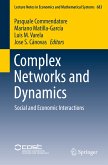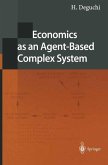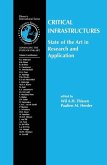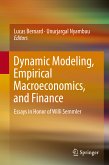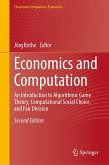52,95 €
52,95 €
inkl. MwSt.
Sofort per Download lieferbar

26 °P sammeln
52,95 €
Als Download kaufen

52,95 €
inkl. MwSt.
Sofort per Download lieferbar

26 °P sammeln
Jetzt verschenken
Alle Infos zum eBook verschenken
52,95 €
inkl. MwSt.
Sofort per Download lieferbar
Alle Infos zum eBook verschenken

26 °P sammeln
- Format: PDF
- Merkliste
- Auf die Merkliste
- Bewerten Bewerten
- Teilen
- Produkt teilen
- Produkterinnerung
- Produkterinnerung

Bitte loggen Sie sich zunächst in Ihr Kundenkonto ein oder registrieren Sie sich bei
bücher.de, um das eBook-Abo tolino select nutzen zu können.
Hier können Sie sich einloggen
Hier können Sie sich einloggen
Sie sind bereits eingeloggt. Klicken Sie auf 2. tolino select Abo, um fortzufahren.

Bitte loggen Sie sich zunächst in Ihr Kundenkonto ein oder registrieren Sie sich bei bücher.de, um das eBook-Abo tolino select nutzen zu können.
This book explores the dynamic processes in economic systems, concentrating on the extraction and use of the natural resources required to meet economic needs. Sections cover methods for dynamic modeling in economics, microeconomic models of firms, modeling optimal use of both nonrenewable and renewable resources, and chaos in economic models. This book does not require a substantial background in mathematics or computer science.
- Geräte: PC
- ohne Kopierschutz
- eBook Hilfe
- Größe: 11.7MB
Andere Kunden interessierten sich auch für
![Modeling Dynamic Economic Systems (eBook, PDF) Modeling Dynamic Economic Systems (eBook, PDF)]() Matthias RuthModeling Dynamic Economic Systems (eBook, PDF)62,95 €
Matthias RuthModeling Dynamic Economic Systems (eBook, PDF)62,95 €![Complex Networks and Dynamics (eBook, PDF) Complex Networks and Dynamics (eBook, PDF)]() Complex Networks and Dynamics (eBook, PDF)64,95 €
Complex Networks and Dynamics (eBook, PDF)64,95 €![Complexity, Cognition, Urban Planning and Design (eBook, PDF) Complexity, Cognition, Urban Planning and Design (eBook, PDF)]() Complexity, Cognition, Urban Planning and Design (eBook, PDF)160,95 €
Complexity, Cognition, Urban Planning and Design (eBook, PDF)160,95 €![Economics as an Agent-Based Complex System (eBook, PDF) Economics as an Agent-Based Complex System (eBook, PDF)]() H. DeguchiEconomics as an Agent-Based Complex System (eBook, PDF)72,95 €
H. DeguchiEconomics as an Agent-Based Complex System (eBook, PDF)72,95 €![Critical Infrastructures State of the Art in Research and Application (eBook, PDF) Critical Infrastructures State of the Art in Research and Application (eBook, PDF)]() Critical Infrastructures State of the Art in Research and Application (eBook, PDF)112,95 €
Critical Infrastructures State of the Art in Research and Application (eBook, PDF)112,95 €![Dynamic Modeling, Empirical Macroeconomics, and Finance (eBook, PDF) Dynamic Modeling, Empirical Macroeconomics, and Finance (eBook, PDF)]() Dynamic Modeling, Empirical Macroeconomics, and Finance (eBook, PDF)72,95 €
Dynamic Modeling, Empirical Macroeconomics, and Finance (eBook, PDF)72,95 €![Economics and Computation (eBook, PDF) Economics and Computation (eBook, PDF)]() Economics and Computation (eBook, PDF)96,95 €
Economics and Computation (eBook, PDF)96,95 €-
-
-
This book explores the dynamic processes in economic systems, concentrating on the extraction and use of the natural resources required to meet economic needs. Sections cover methods for dynamic modeling in economics, microeconomic models of firms, modeling optimal use of both nonrenewable and renewable resources, and chaos in economic models. This book does not require a substantial background in mathematics or computer science.
Dieser Download kann aus rechtlichen Gründen nur mit Rechnungsadresse in A, B, BG, CY, CZ, D, DK, EW, E, FIN, F, GR, HR, H, IRL, I, LT, L, LR, M, NL, PL, P, R, S, SLO, SK ausgeliefert werden.
Produktdetails
- Produktdetails
- Verlag: Springer US
- Seitenzahl: 326
- Erscheinungstermin: 8. Februar 2012
- Englisch
- ISBN-13: 9781461422099
- Artikelnr.: 37357841
- Verlag: Springer US
- Seitenzahl: 326
- Erscheinungstermin: 8. Februar 2012
- Englisch
- ISBN-13: 9781461422099
- Artikelnr.: 37357841
- Herstellerkennzeichnung Die Herstellerinformationen sind derzeit nicht verfügbar.
Foreword.
Preface.
Notation.
Part I: Introduction.
Modeling Dynamic Systems.
Disaggregation of Stocks.
Part II: Methods for Dynamic Modeling.
System Boundaries in Space and Time.
Scheduling Flows.
Positive Feedback in the Economy.
Derivatives and Lags.
Part III: Microeconomic Models of Firms.
Introduction to Modeling Economic Processes.
Substitution of Inputs in Production.
Time Value.
Opportunity Cost.
The Profit
Maximizing Competitive Firm.
The Profit
Maximizing Monopoly.
Monopolistic Collusion.
Quasi
Competitive Equilibrium.
Modeling Economic Games.
Part IV: Modeling Optimal Use of Nonrenewable Resources.
Competitive Scarcity.
Competitive Scarcity with Substitution.
Competitive Scarcity with Cost Dependent on Production Rate and Resource Size.
Competitive Scarcity with Technical Change.
Competitive Scarcity with Exploration.
Monopoly Scarcity.
Monopoly Scarcity with Variable Interest Rate.
Monopoly Scarcity with Cost Dependent on Production Rate and Resource Size.
Part V: Modeling Optimal Use of Renewable Resources.
Optimal Timber Harvest.
Managing Open Access Resources.
Optimal Harvest from Fisheries.
Spatial Fishery Model.
Part VI: Chaos in Economic Models.
Preference Cycles and Chaos.
Nonmonotonic Demand and Supply Curves.
Price Expectation and Production Lags.
Chaos in Macroeconomic Models.
Part VII: Conclusion.
Building a Modeling Community.
References.
Index.
Preface.
Notation.
Part I: Introduction.
Modeling Dynamic Systems.
Disaggregation of Stocks.
Part II: Methods for Dynamic Modeling.
System Boundaries in Space and Time.
Scheduling Flows.
Positive Feedback in the Economy.
Derivatives and Lags.
Part III: Microeconomic Models of Firms.
Introduction to Modeling Economic Processes.
Substitution of Inputs in Production.
Time Value.
Opportunity Cost.
The Profit
Maximizing Competitive Firm.
The Profit
Maximizing Monopoly.
Monopolistic Collusion.
Quasi
Competitive Equilibrium.
Modeling Economic Games.
Part IV: Modeling Optimal Use of Nonrenewable Resources.
Competitive Scarcity.
Competitive Scarcity with Substitution.
Competitive Scarcity with Cost Dependent on Production Rate and Resource Size.
Competitive Scarcity with Technical Change.
Competitive Scarcity with Exploration.
Monopoly Scarcity.
Monopoly Scarcity with Variable Interest Rate.
Monopoly Scarcity with Cost Dependent on Production Rate and Resource Size.
Part V: Modeling Optimal Use of Renewable Resources.
Optimal Timber Harvest.
Managing Open Access Resources.
Optimal Harvest from Fisheries.
Spatial Fishery Model.
Part VI: Chaos in Economic Models.
Preference Cycles and Chaos.
Nonmonotonic Demand and Supply Curves.
Price Expectation and Production Lags.
Chaos in Macroeconomic Models.
Part VII: Conclusion.
Building a Modeling Community.
References.
Index.
Foreword.- Preface.- Notation.- Part I: Introduction.- Modeling Dynamic Systems.- Disaggregation of Stocks.- Part II: Methods for Dynamic Modeling.- System Boundaries in Space and Time.- Scheduling Flows.- Positive Feedback in the Economy.- Derivatives and Lags.- Part III: Microeconomic Models of Firms.- Introduction to Modeling Economic Processes.- Substitution of Inputs in Production.- Time Value.- Opportunity Cost.- The Profit-Maximizing Competitive Firm.- The Profit-Maximizing Monopoly.- Monopolistic Collusion.- Quasi-Competitive Equilibrium.- Modeling Economic Games.- Part IV: Modeling Optimal Use of Nonrenewable Resources.- Competitive Scarcity.- Competitive Scarcity with Substitution.- Competitive Scarcity with Cost Dependent on Production Rate and Resource Size.- Competitive Scarcity with Technical Change.- Competitive Scarcity with Exploration.- Monopoly Scarcity.- Monopoly Scarcity with Variable Interest Rate.- Monopoly Scarcity with Cost Dependent on Production Rate and Resource Size.- Part V: Modeling Optimal Use of Renewable Resources.- Optimal Timber Harvest.- Managing Open Access Resources.- Optimal Harvest from Fisheries.- Spatial Fishery Model.- Part VI: Chaos in Economic Models.- Preference Cycles and Chaos.- Nonmonotonic Demand and Supply Curves.- Price Expectation and Production Lags.- Chaos in Macroeconomic Models.- Part VII: Conclusion.- Building a Modeling Community.- References.- Index.
Foreword.
Preface.
Notation.
Part I: Introduction.
Modeling Dynamic Systems.
Disaggregation of Stocks.
Part II: Methods for Dynamic Modeling.
System Boundaries in Space and Time.
Scheduling Flows.
Positive Feedback in the Economy.
Derivatives and Lags.
Part III: Microeconomic Models of Firms.
Introduction to Modeling Economic Processes.
Substitution of Inputs in Production.
Time Value.
Opportunity Cost.
The Profit
Maximizing Competitive Firm.
The Profit
Maximizing Monopoly.
Monopolistic Collusion.
Quasi
Competitive Equilibrium.
Modeling Economic Games.
Part IV: Modeling Optimal Use of Nonrenewable Resources.
Competitive Scarcity.
Competitive Scarcity with Substitution.
Competitive Scarcity with Cost Dependent on Production Rate and Resource Size.
Competitive Scarcity with Technical Change.
Competitive Scarcity with Exploration.
Monopoly Scarcity.
Monopoly Scarcity with Variable Interest Rate.
Monopoly Scarcity with Cost Dependent on Production Rate and Resource Size.
Part V: Modeling Optimal Use of Renewable Resources.
Optimal Timber Harvest.
Managing Open Access Resources.
Optimal Harvest from Fisheries.
Spatial Fishery Model.
Part VI: Chaos in Economic Models.
Preference Cycles and Chaos.
Nonmonotonic Demand and Supply Curves.
Price Expectation and Production Lags.
Chaos in Macroeconomic Models.
Part VII: Conclusion.
Building a Modeling Community.
References.
Index.
Preface.
Notation.
Part I: Introduction.
Modeling Dynamic Systems.
Disaggregation of Stocks.
Part II: Methods for Dynamic Modeling.
System Boundaries in Space and Time.
Scheduling Flows.
Positive Feedback in the Economy.
Derivatives and Lags.
Part III: Microeconomic Models of Firms.
Introduction to Modeling Economic Processes.
Substitution of Inputs in Production.
Time Value.
Opportunity Cost.
The Profit
Maximizing Competitive Firm.
The Profit
Maximizing Monopoly.
Monopolistic Collusion.
Quasi
Competitive Equilibrium.
Modeling Economic Games.
Part IV: Modeling Optimal Use of Nonrenewable Resources.
Competitive Scarcity.
Competitive Scarcity with Substitution.
Competitive Scarcity with Cost Dependent on Production Rate and Resource Size.
Competitive Scarcity with Technical Change.
Competitive Scarcity with Exploration.
Monopoly Scarcity.
Monopoly Scarcity with Variable Interest Rate.
Monopoly Scarcity with Cost Dependent on Production Rate and Resource Size.
Part V: Modeling Optimal Use of Renewable Resources.
Optimal Timber Harvest.
Managing Open Access Resources.
Optimal Harvest from Fisheries.
Spatial Fishery Model.
Part VI: Chaos in Economic Models.
Preference Cycles and Chaos.
Nonmonotonic Demand and Supply Curves.
Price Expectation and Production Lags.
Chaos in Macroeconomic Models.
Part VII: Conclusion.
Building a Modeling Community.
References.
Index.
Foreword.- Preface.- Notation.- Part I: Introduction.- Modeling Dynamic Systems.- Disaggregation of Stocks.- Part II: Methods for Dynamic Modeling.- System Boundaries in Space and Time.- Scheduling Flows.- Positive Feedback in the Economy.- Derivatives and Lags.- Part III: Microeconomic Models of Firms.- Introduction to Modeling Economic Processes.- Substitution of Inputs in Production.- Time Value.- Opportunity Cost.- The Profit-Maximizing Competitive Firm.- The Profit-Maximizing Monopoly.- Monopolistic Collusion.- Quasi-Competitive Equilibrium.- Modeling Economic Games.- Part IV: Modeling Optimal Use of Nonrenewable Resources.- Competitive Scarcity.- Competitive Scarcity with Substitution.- Competitive Scarcity with Cost Dependent on Production Rate and Resource Size.- Competitive Scarcity with Technical Change.- Competitive Scarcity with Exploration.- Monopoly Scarcity.- Monopoly Scarcity with Variable Interest Rate.- Monopoly Scarcity with Cost Dependent on Production Rate and Resource Size.- Part V: Modeling Optimal Use of Renewable Resources.- Optimal Timber Harvest.- Managing Open Access Resources.- Optimal Harvest from Fisheries.- Spatial Fishery Model.- Part VI: Chaos in Economic Models.- Preference Cycles and Chaos.- Nonmonotonic Demand and Supply Curves.- Price Expectation and Production Lags.- Chaos in Macroeconomic Models.- Part VII: Conclusion.- Building a Modeling Community.- References.- Index.


